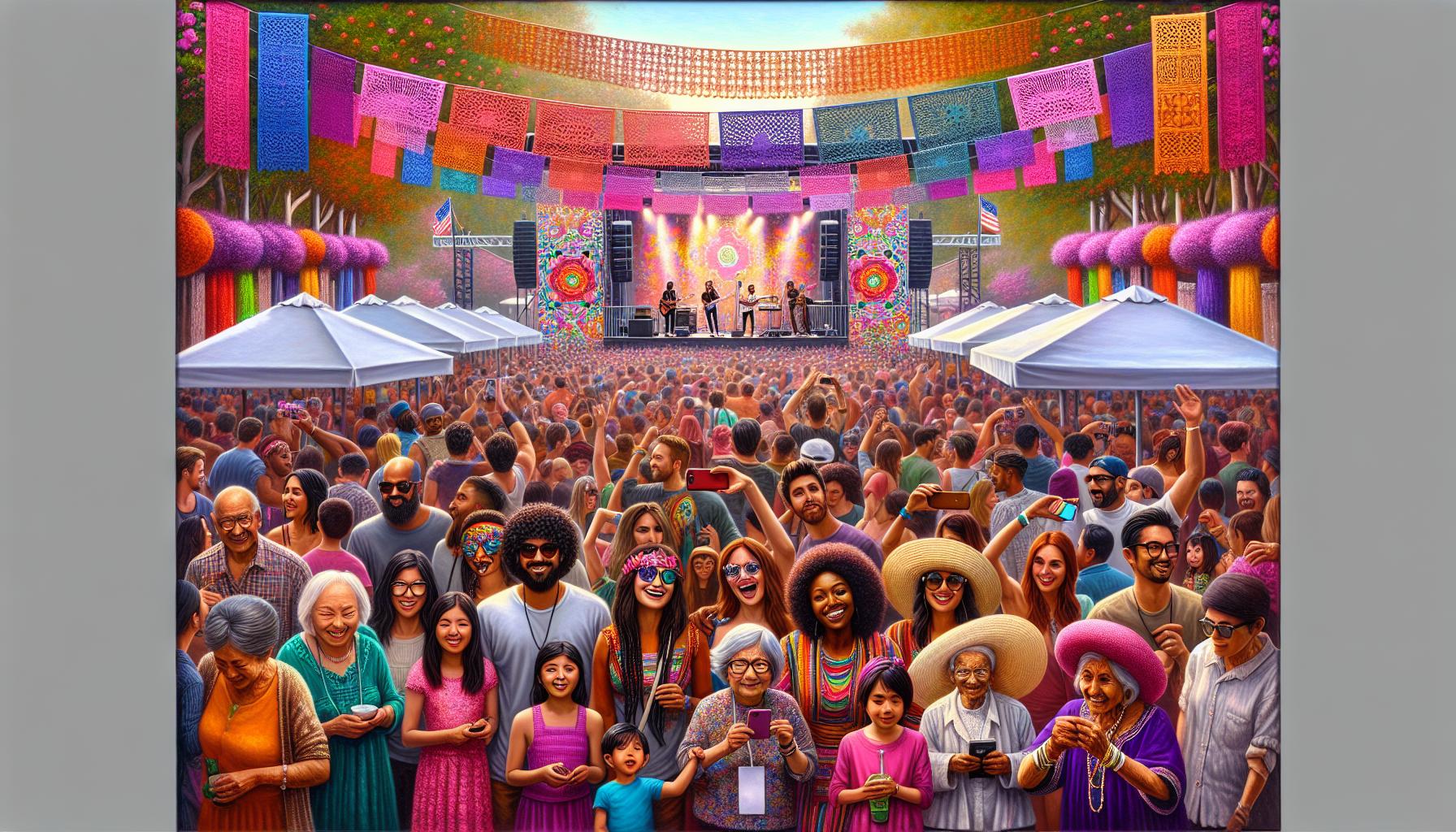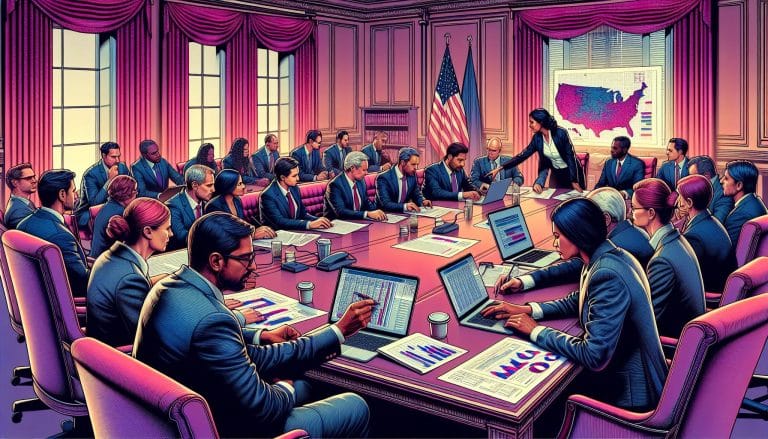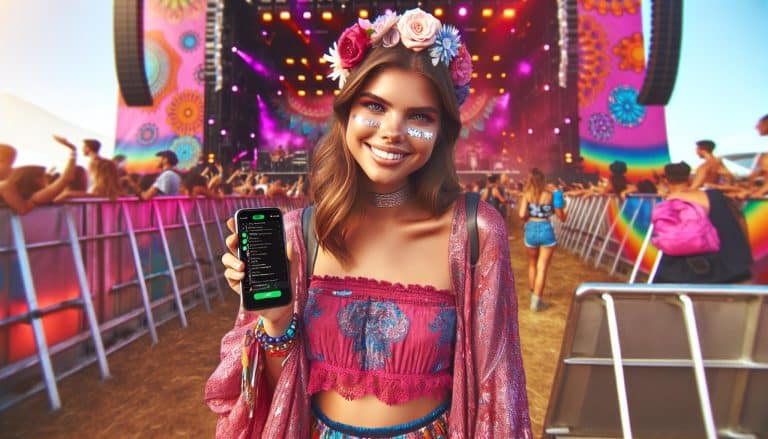Smart ticketing strategies can make or break your festival’s success in today’s competitive event landscape. With the right mix of ticket types, pricing tiers, and promotional approaches, you’ll maximize revenue while creating an exceptional experience for your attendees. Modern festivals are embracing dynamic pricing models and diverse ticket categories to drive early sales and cater to different audience segments.
Creating a comprehensive ticketing strategy isn’t just about setting prices – it’s about crafting value propositions that resonate with various customer segments. From VIP experiences to early bird specials, each ticket tier should offer distinct benefits that justify its price point. By implementing sophisticated pricing strategies like automated tier adjustments and season ticket programs, you’ll build long-term customer loyalty while optimizing your revenue potential.
Key Takeaways
- Effective festival ticketing strategies combine tiered pricing, dynamic pricing models, and diverse ticket categories to maximize revenue and attendance
- Strategic timing of ticket releases, with early bird discounts of 20-30% and multiple pricing tiers, creates urgency and drives advance sales
- A robust ticketing infrastructure with mobile-friendly platforms, secure payment systems, and fraud prevention measures is essential for successful ticket management
- Data-driven decision making through analytics tracking helps optimize pricing, promotional timing, and marketing channel performance
- Multi-channel marketing across social media, email, and influencer partnerships with platform-specific content drives ticket sales effectively
Understanding Your Festival’s Target Audience and Goals
Effective festival planning starts with a clear understanding of your target demographic and specific revenue objectives. Thorough audience research and goal-setting create the foundation for successful ticket sales strategies.
Defining Your Festival Identity
Create a distinctive brand identity aligned with your target audience’s preferences and expectations. Focus on these key elements:
- Design uniform visual elements including logos color schemes and promotional materials
- Develop messaging that resonates with specific age demographics like social media content for ages 18-24
- Incorporate unique features such as exclusive performances interactive installations or themed areas
- Highlight sustainable initiatives like solar-powered stages or waste reduction programs
- Create immersive experiences through innovative stage designs and technology integrations
Setting Sales Objectives and Timelines
Establish quantifiable sales targets and implementation schedules to track progress effectively:
- Set specific ticket sales goals:
- Define target number of tickets for each pricing tier
- Calculate projected revenue benchmarks
- Establish attendance targets per festival area
- Create timeline benchmarks:
- Early-bird sales periods with defined sales targets
- Regular price ticket launch dates
- Final sales push deadlines
- Monitor key performance indicators:
- Track daily ticket sales velocity
- Measure conversion rates across marketing channels
- Analyze demographics of ticket buyers
- Implement data collection methods:
- Use surveys to gather attendee preferences
- Analyze social media insights for engagement metrics
- Review historical ticket sales patterns
This structured approach to audience understanding and goal-setting enables targeted marketing efforts and optimized ticket sales strategies.
Essential Ticketing Infrastructure

A robust ticketing infrastructure forms the foundation of successful festival ticket sales and management.
Choosing the Right Ticketing Platform
Select a ticketing platform that provides comprehensive features for managing diverse ticket types and sales channels. Look for these essential components:
- Multiple Ticket Tiers: Create unlimited ticket categories including Early Bird General Admission VIP and Group packages
- Dynamic Pricing Tools: Set up automated price adjustments based on inventory levels and time-based rules
- Analytics Dashboard: Track sales metrics audience demographics and revenue data in real-time
- Marketing Integration: Connect directly with social media channels and website sales portals
- Custom Branding: Maintain consistent branding across all customer touchpoints
- API Access: Interface with other essential business tools and platforms
Setting Up Mobile-Friendly Sales Channels
Configure your ticketing system to handle mobile transactions efficiently with these key elements:
- Responsive Design: Ensure consistent display and functionality across all devices
- Quick Purchase Flow: Limit checkout steps to 3-4 screens maximum
- Real-time Sync: Maintain accurate inventory levels across all sales channels
- Mobile Wallet Integration: Accept digital payment methods like Apple Pay and Google Pay
- SMS Notifications: Send instant purchase confirmations and updates
- QR Code Tickets: Distribute mobile-friendly ticket formats
- Named Ticket System: Link each ticket to a specific attendee
- ID Verification: Match ticket holder names against valid identification at entry
- Secure Transfers: Enable legitimate ticket transfers through authorized channels
- Payment Protection: Use PCI DSS compliant payment processing
- Fraud Detection: Deploy machine learning algorithms to identify suspicious transactions
- Access Control: Implement unique barcodes or RFID technology for entry validation
| Security Feature | Fraud Reduction Rate |
|---|---|
| Named Tickets | 85% reduction in unauthorized resales |
| ID Verification | 92% reduction in counterfeit tickets |
| Secure Transfers | 78% reduction in scalping incidents |
Strategic Pricing Models
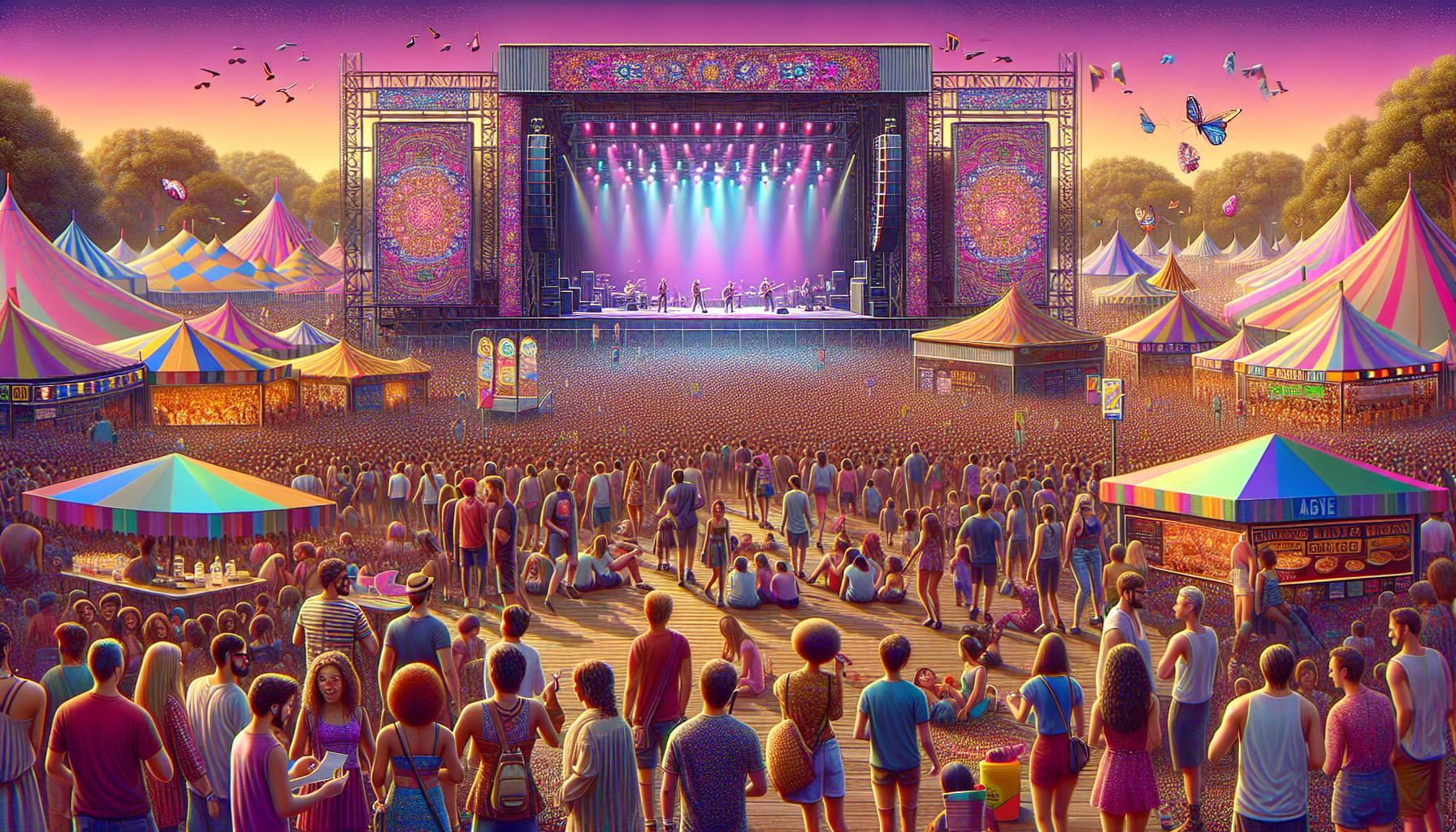
Strategic pricing models optimize revenue generation through systematic ticket pricing approaches aligned with market demand and perceived value.
Early Bird and Tiered Pricing Structures
Early bird pricing creates urgency and drives advance ticket sales through discounted rates. Set up 3-4 distinct pricing tiers:
- Launch 25-35% discounts for the initial early bird phase in the first 48 hours
- Implement 15-20% discounts for the second tier running 2-3 weeks
- Structure 5-10% discounts for the third tier lasting 3-4 weeks
- Price the final tier at full value for the remaining sales period
VIP and Group Package Options
VIP and group packages generate premium revenue streams through exclusive benefits and bulk pricing incentives:
VIP Package Components:
- Reserved premium viewing areas
- Private lounges with complimentary refreshments
- Express entry lanes
- Exclusive merchandise items
- Meet-and-greet opportunities
Group Package Structure:
- Set minimum group sizes of 4-6 people
- Offer 10-15% discounts on purchases of 6-10 tickets
- Increase discounts to 20-25% for groups of 10+ tickets
- Include dedicated group check-in areas
Dynamic Pricing Strategies
Dynamic pricing maximizes revenue by adjusting ticket prices based on real-time demand factors:
- Monitor ticket sales velocity to identify high-demand periods
- Increase prices by 5-10% when inventory drops below 75%
- Apply 15-20% increases when inventory reaches 50%
- Set automatic price adjustments for weekend dates
- Implement surge pricing during peak booking hours
- Raise prices by 10-15% in the final month
- Apply 20-25% premiums in the last week
- Set higher rates for premium timeslots
- Adjust pricing for high-demand festival days
Creating an Effective Sales Timeline

A strategic sales timeline maximizes ticket revenue through carefully planned phases and targeted promotions. The sales cycle spans 3-6 months for optimal results, depending on event size and market positioning.
Pre-Sale and Launch Planning
- Start promotional activities 4-5 months before large festivals and 2-3 months before club events
- Launch ticket sales during peak engagement hours: 10:00-12:00 AM or 17:00-19:00 PM
- Select Mondays or Wednesdays for optimal launch days based on purchase behavior data
- Create exclusive pre-sale lists for loyal customers and VIP segments
- Build anticipation through coordinated social media teasers and email campaigns
Managing Different Sales Phases
Early Access Phase (First 48 hours)
- Release limited quantities at exclusive pricing
- Target past attendees and loyalty program members
- Implement countdown timers to drive urgency
Early Bird Phase (2-4 weeks)
- Offer tiered pricing with clear quantity limits
- Include group ticket options for bulk purchases
- Display remaining ticket quantities
- Introduce new ticket types and packages
- Launch targeted advertising campaigns
- Refresh marketing with artist announcements
- Create scarcity through limited-time flash sales
- Implement dynamic pricing based on real-time demand
- Display countdown timers for sales end dates
- Target advertising to specific demographics showing interest
- Launch social media contests for final ticket releases
- Offer group discounts to drive bulk purchases
| Sales Phase | Duration | Pricing Strategy |
|---|---|---|
| Early Access | 48 hours | 30-40% discount |
| Early Bird | 2-4 weeks | 20-25% discount |
| Regular Sales | 4-8 weeks | Standard pricing |
| Last-Minute | 1-2 weeks | Dynamic pricing |
Marketing Your Festival Tickets
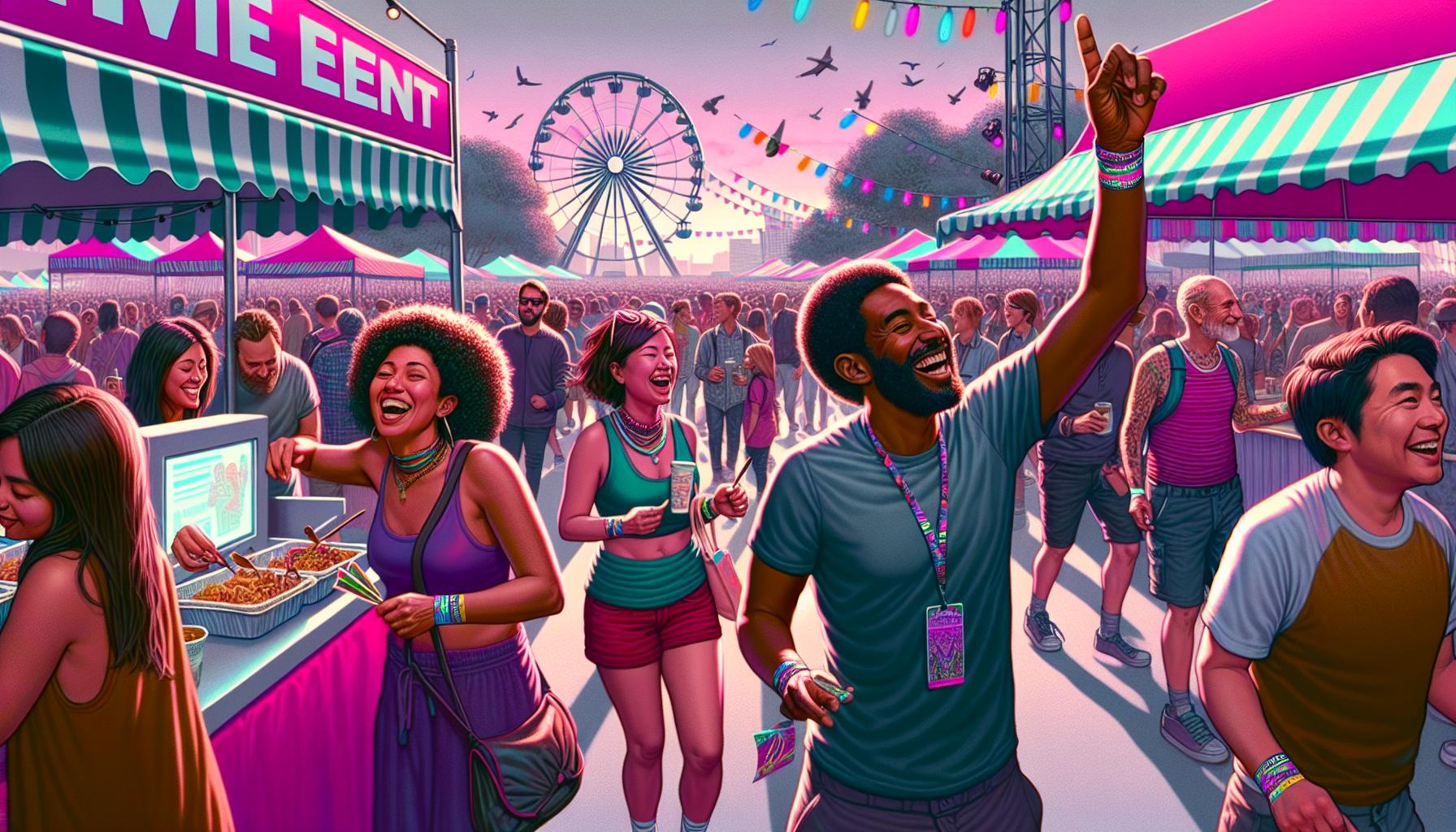
Marketing festival tickets requires a strategic approach across multiple digital channels to maximize reach and drive sales effectively.
Social Media Campaign Strategies
Create platform-specific content tailored to each social network’s unique characteristics:
- Channel-Specific Content: Design visual content for Instagram, text-based updates for Twitter and interactive posts for Facebook to match each platform’s strengths
- Engagement Tactics: Generate buzz through interactive polls, behind-the-scenes content and artist spotlights
- Targeted Advertising: Run demographic-specific ad campaigns across social platforms with custom audiences based on music preferences and past event attendance
- Custom AR Filters: Design festival-themed filters and augmented reality experiences for attendees to share on social platforms
- Curated Playlists: Create official festival playlists featuring performing artists to build pre-event excitement
Email Marketing Techniques
Implement strategic email campaigns to nurture leads and drive ticket sales:
- Segmented Lists: Divide email lists into categories:
- Past attendees
- Early interest registrants
- Industry professionals
- Geographic locations
- Drip Campaigns: Structure automated email sequences:
- Initial announcement
- Early bird ticket alerts
- Lineup reveals
- Price increase warnings
- Final ticket availability
- Personalization: Include recipient-specific content:
- Previous attendance history
- Genre preferences
- Purchase patterns
- Micro-Influencer Focus: Partner with genre-specific influencers who have 10,000-50,000 engaged followers
- Content Creation: Provide influencers with:
- Exclusive discount codes
- Behind-the-scenes access
- Pre-sale ticket allocations
- Custom festival content
- Trackable Results: Monitor partnership success through:
- Unique promo codes
- Custom landing pages
- Affiliate links
- Value-Based Partnerships: Create authentic collaborations focused on mutual audience benefits rather than purely promotional content
Building Excitement and Urgency
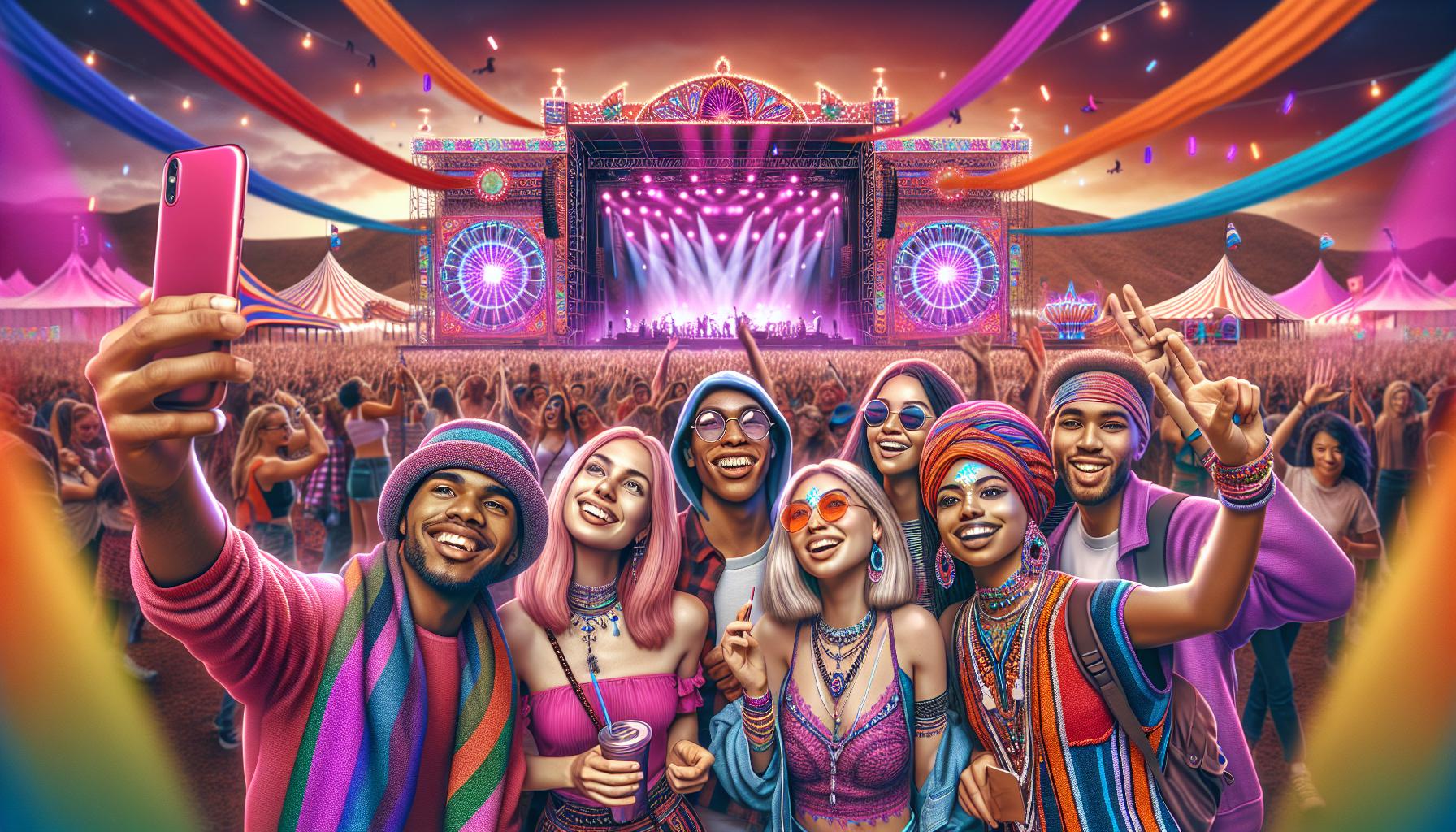
Creating a sense of urgency drives ticket sales through strategic pricing and promotional tactics that capitalize on consumer psychology.
Limited-Time Offers and Flash Sales
Launch early bird discounts with fixed quantities of discounted tickets to generate immediate sales. Set up 3-4 distinct pricing tiers:
- Tier 1: 20-25% discount on the first 100-200 tickets
- Tier 2: 15% discount on the next 200-300 tickets
- Tier 3: 10% discount on the following 300-500 tickets
- Regular price tickets after all discounted tiers sell out
Implement flash sales during key periods:
- Payday weekends
- Holiday seasons
- 100 days before the event
- 30 days before the event
Exclusive Experiences and Packages
Structure premium packages to increase average transaction value:
- VIP Access Package: Backstage passes & priority seating
- Collector’s Package: Event merchandise & limited edition items
- Comfort Package: Premium viewing areas & dedicated facilities
- Group Package: Bulk pricing for 4+ tickets with added perks
Create tiered benefits:
| Package Type | Price Premium | Included Benefits |
|---|---|---|
| Standard | Base price | General admission |
| Premium | +30-40% | Priority entry & exclusive area access |
| VIP | +75-100% | Meet & greet + merchandise bundle |
FOMO Marketing Tactics
Implement scarcity indicators to drive conversions:
- Display real-time ticket availability counters
- Show “X tickets remaining at this price” alerts
- Highlight sold-out ticket tiers
- Showcase ticket purchase activity feeds
- 60% of millennials respond to FOMO marketing
- Share attendee testimonials from previous events
- Display total ticket sales milestones
- Feature countdown timers for price increases
Data Analysis and Optimization
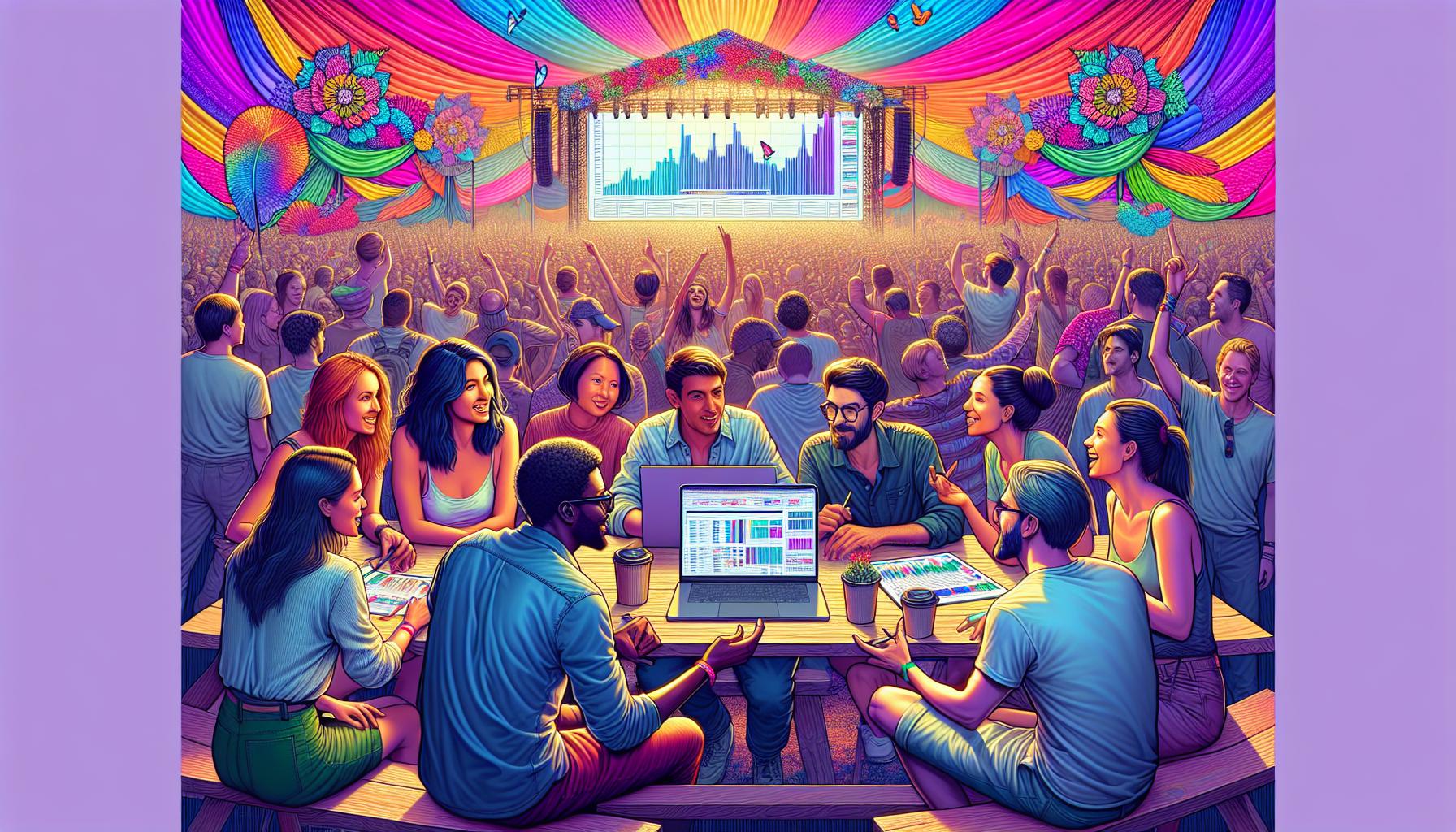
Data-driven decision making optimizes festival ticket sales through strategic analysis of key metrics and behavioral patterns. Historical data shows that 12% to 17% of ticket buyers are repeat attendees, emphasizing the importance of current lineup promotion.
Key Performance Metrics to Track
Monitor these essential metrics to measure festival performance:
- Track daily ticket sales velocity across different price tiers and categories
- Measure website engagement through unique visitors and bounce rates
- Calculate email marketing effectiveness via open rates and conversion rates
- Monitor social media growth including follower increases and engagement rates
- Analyze advertising ROI through click-through rates and cost per acquisition
- Record mobile app activity including downloads and active user counts
- Track referral sources to identify top-performing marketing channels
Using Analytics to Adjust Strategy
Transform data insights into actionable strategies:
- Analyze the sales cycle patterns – 50% of tickets sell within 39% of the cycle
- Adjust promotional timing based on historical peak selling periods
- Modify pricing tiers according to real-time sales velocity
- Optimize marketing spend toward channels with highest conversion rates
- Refine audience targeting based on demographic purchase patterns
- Adapt email campaigns using segment performance data
- Adjust social media content based on engagement analytics
Planning for Future Events
Leverage historical data to enhance future festival performance:
- Create benchmark reports comparing year-over-year ticket sales trends
- Develop pricing models based on previous attendance patterns
- Build promotional calendars aligned with identified peak selling periods
- Design targeted campaigns using past audience segment analysis
- Structure ticket tiers according to historical demand patterns
- Calculate inventory allocation based on previous category performance
- Set revenue targets using past sales cycle data
Note: All statistical data referenced from festival industry reports [1].
Common Ticketing Challenges and Solutions
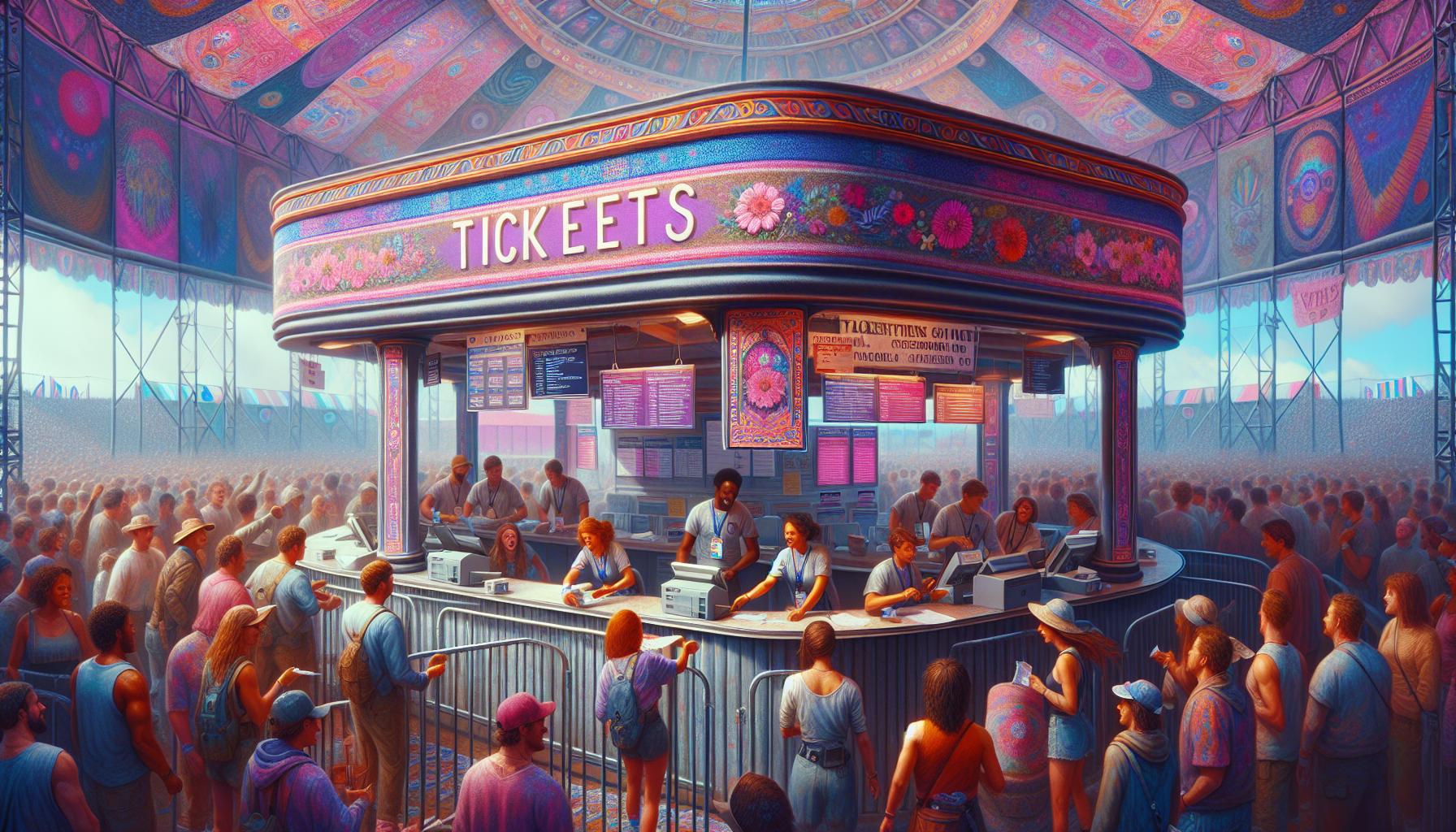
Festival producers face specific ticketing challenges that impact revenue and attendance. Here are proven solutions to address three critical areas:
Managing Peak Sale Periods
Peak sale periods create intense pressure on ticketing systems and require strategic management for optimal results.
- Implement Tiered Pricing Structure
Create 3-4 distinct pricing tiers (Early Bird, Regular, Late Bird) with a 15-25% price increase between each tier
Set specific inventory limits for each tier (e.g., first 1000 tickets at Early Bird price)
Use automatic tier transitions based on inventory levels or dates - Schedule Strategic Release Times
Launch ticket sales on Tuesday-Thursday between 10 AM-2 PM local time
Space pre-sale and public sale dates 48-72 hours apart
Release new ticket batches during high-engagement periods based on social media analytics
Handling Technical Issues
Technical problems during peak sales can lead to lost revenue and damaged reputation.
- Implement Load Management
Set up virtual waiting rooms with queue systems
Enable batch processing of 500-1000 transactions per minute
Configure automatic scaling of server resources during high-traffic periods - Create Backup Systems
Deploy redundant payment gateways with automatic failover
Maintain offline sales channels as contingency
Set up automated error reporting with 5-minute response protocols
Preventing Ticket Fraud
Named ticket systems reduce unauthorized resales by 85% and protect revenue streams.
- Deploy Security Measures
Implement dynamic QR codes that refresh every 60 seconds
Require ID verification for purchases over specific amounts
Enable secure ticket transfers through official platforms only
| Security Feature | Impact |
|---|---|
| Named Tickets | 85% reduction in unauthorized resales |
| ID Verification | 92% reduction in counterfeit tickets |
| Secure Transfers | 78% reduction in scalping incidents |
Best Practices for Festival Success
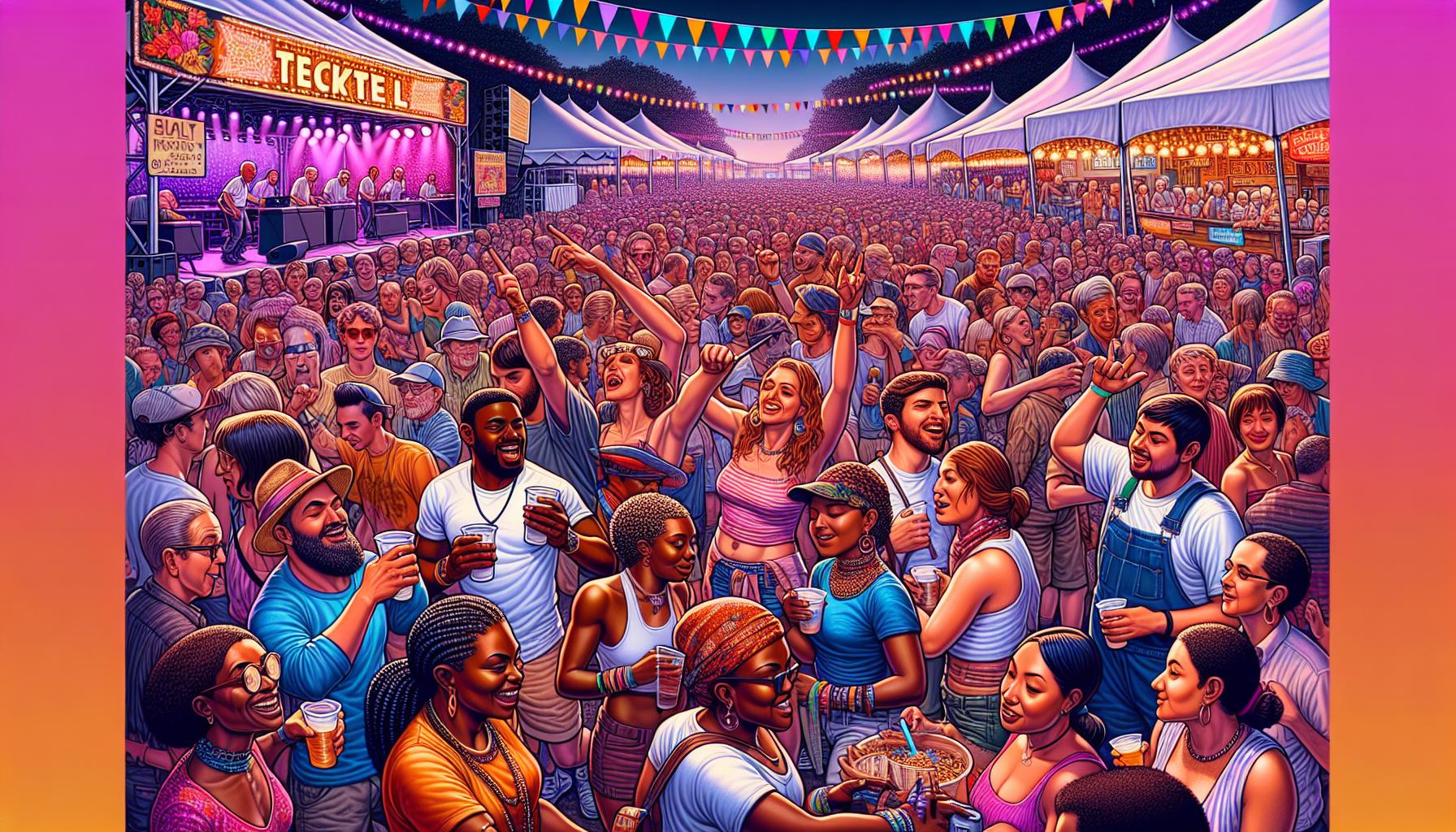
Successful festival ticketing requires a strategic blend of smart pricing technology and customer-focused solutions. Your ticketing strategy should evolve with your festival’s growth while staying true to your core audience’s needs and preferences.
Remember that your ticketing approach directly impacts both revenue and attendee satisfaction. Focus on creating value through diverse ticket options dynamic pricing and secure transaction processes. Keep testing and optimizing your strategies based on real-time data and customer feedback.
By implementing these proven ticketing strategies you’ll be better equipped to drive sales maximize revenue and deliver an exceptional festival experience that keeps attendees coming back year after year.
Frequently Asked Questions
What is the ideal timeline for starting festival ticket sales?
Start selling tickets 3-6 months before the festival date. For large festivals, begin promotional activities 4-5 months in advance, while smaller club events require 2-3 months. Launch ticket sales during peak engagement hours and create exclusive pre-sale lists to maximize early sales.
How can dynamic pricing benefit festival ticket sales?
Dynamic pricing adjusts ticket prices based on real-time demand factors, allowing organizers to maximize revenue. This strategy enables price optimization during peak times, responds to market demand, and helps balance ticket inventory throughout the sales cycle.
What security measures are essential for festival ticketing?
Implement named tickets, ID verification, secure transfers, and payment protection systems. Statistics show these measures can reduce unauthorized resales by 85%, counterfeit tickets by 92%, and scalping incidents by 78%.
How important are mobile-friendly sales channels?
Mobile-friendly sales channels are crucial for modern festival ticketing. Features should include responsive design, quick purchase flow, real-time inventory sync, mobile wallet integration, and QR code tickets to enhance user experience and accessibility.
What are effective strategies for creating ticket urgency?
Use limited-time offers, early bird discounts, tiered pricing, and flash sales to drive urgency. Implement scarcity indicators like real-time ticket availability counters and countdown timers to encourage faster purchase decisions.
How can festivals optimize their VIP ticket offerings?
Create distinct VIP packages with exclusive benefits and premium experiences. Implement tiered pricing structures for different VIP levels and offer unique perks that justify higher price points to maximize revenue from premium ticket sales.
What role does social media play in festival ticket marketing?
Social media is crucial for ticket marketing through platform-specific content, targeted advertising, custom AR filters, and curated playlists. Engage with potential attendees through consistent content and collaborate with micro-influencers for broader reach.
